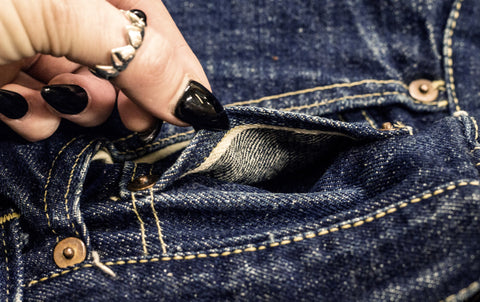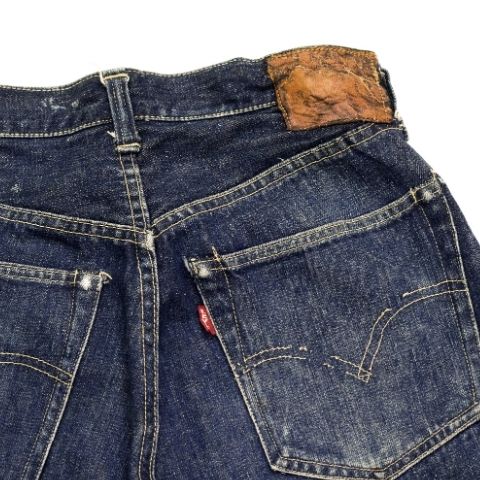How To Spot : Super Rare 1940s Levi's 501 Jeans
From the top of the Rocky Mountains, to the deepest, darkest corners of the Nevada goldmines, hunters search far and wide for the hidden history of Levi Jean’s. Over 20,000 people from all over the world every month head to the Rose Bowl Flea Market to source the rarest and oldest Levis that money can buy and in Japan, denim auctions frequently take place where a pair of Levis can set you back over 50,000 pounds.
Now we are giving you a chance to be a part of Levis history with an ultra rare pair of 501s from 1947 discovered by our skilled hands at Beyond Retro. What makes these jeans so unique? Read on!

Let’s start with the fabric, a tightly woven denim made in the USA by White Oak Cone Denim in North Carolina, the exclusive manufacturers of Levi 501s back when these jeans were crafted. The denim was produced on vintage American Draper X3 fly shuttle looms. These looms give a completely unique weave to the fabric that modern day production can’t compete with. The yarn is left uncut after each layer of weave, leaving a tightly bound edge that cannot unravel, meaning the jeans maintain their integrity throughout their life. You can see this with the white selvedge edge running down the outer side seams of legs and the inner seam of the watch pocket. There is a stain which is only visible on the inside of the fabric which only adds to the character and story of these amazing jeans.

Next we have the coveted red tab. Unlike modern Levis this red tab only has Levis written on one side all in upper case, showcasing the holy grail that is the, ‘Big E.’ This was introduced to Levis in 1936, to differentiate from the many competitors that were copying Levis dark denim and Arcuate back pocket stitching. The ‘Big E,’ ran until 1971 but the one sided logo disappeared in the 50s making these jeans a rarity.

The pockets have the classic Levis Arcuate stitching. There are many rumours as to the origins of this design such as a reference to the Rocky Mountain Eagle but no one knows for certain as Levis loss all their records in the San Francisco earthquake of 1906. These pockets are from when the double-needle sewing machine was first launched in 1947 in creating the design. Making the Arcuate more precise and uniform. The stitching on the Arcuate and throughout the jeans is in a faded lemon thread, a stark contrast to the modern orange stitching we see today.

Underneath the corners of the back pockets hide the copper rivets which have slowly worn through the selvedge fabric giving the jeans an insight into the wear of the previous owner. The hidden rivets were introduced back in 1937 and as you can see in pictures are only visible from inside the jeans. They were hidden due to customer complaints of the previous outer rivets that scratched cowboys saddles and the owners furniture. The hidden design was used until 1966 when Levis changed to bar tack stitching. The rivets themselves which made Levis into being known for strong and durable denim are made from copper before the cheaper flatter sliver aluminium rivets were introduced in the 1960s.

Behind the top button is a small single ‘v’ stitch which runs from the top of the waistband and down at an angle creating a ‘v’ shape. This feature was used on 501s up until 1969. The buttons themselves are the father of the modern Levis buttons that are used today. Solid and without a doughnut core they include Levis country of origin.

The back is still intact which is near on impossible! It is fragile and marked and worn with the jeans spectacular 72 year past. It’s incredible to see how well this piece of wearable American history has lasted. When we are so use to throwing away fast fashion it’s important to remember and honour the quality of the past and nothing shows the quality of denims past quite like these 501s.

Buy your own piece of history here
Words Hugo Harris










